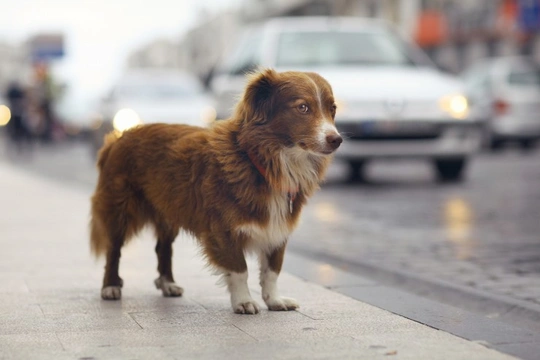
Keeping a dog within an urban environment
One thing that it is certainly true to say about dogs is that they are very adaptable, and not only made a successful transition from life in the wild to that of companions and working partners, but they have also adapted a lot within the last couple of centuries too, as we ourselves have evolved and changed as well.
Ex working dogs generally make for excellent domestic pets despite their working lives being completely different to life at home, and dogs can also adapt to different types of domestic living situations as well, from rural life where they may be surrounded by green fields, through suburbia to life in flats and apartments in our most densely populated cities.
If you live in the middle of a city, you will have to consider carefully whether or not the environment that you live in is suitable for keeping a dog, but providing that you are prepared to compromise, it is entirely possible to own a dog in the city, even if you live right in the middle of the urban sprawl in an apartment block.
In this article, we will look at some of the core considerations that you should bear in mind when it comes to keeping a dog within an urban environment. Read on to learn more.
Pick the right sort of dog
First and foremost, in order to ensure that your dog will fit into your urban lifestyle, you will need to choose the right sort of dog. This means that you might have to narrow down your potential choices to dogs that will be happy within a smaller home, and within a city environment. Keeping a small dog like a Yorkshire terrier or a quiet dog like a Greyhound should be compatible with city life, but very active, working breeds like the Springer spaniel will be much more challenging.
Think of the neighbours
The chances are that if you live in the city, you have neighbours in close proximity, especially if you live in a flat or a terraced house. You should think about the impact that your dog ownership will have on them, and check if there are any restrictions on dog ownership in your building, and if you rent, make sure you get permission from the landlord before you buy a dog.
You should also take pains to ensure that your dog is not a pest or inconvenience to your neighbours, such as by barking when you are out or making a mess of the communal gardens or local pavements.
Find out what local facilities cater for dogs
There are actually a few advantages to keeping a dog within a city environment, when it comes to the availability of services and help for caring for dogs. Dog walkers, doggy day care centres, grooming parlours and other things are all likely to be more prolific within cities than in suburban areas, which provides some advantages!
If you will need to arrange for someone to come in and take care of your dog while you are at work, find out about these things before you get your dog.
Find some good walks
Your new dog will need walking at least twice a day, and so it is important to scope out the local area and find some good places to take them! Cities often have dedicated dog walking parks, as well as other parks and green spaces where dogs are allowed. However, before you assume that the park near to your home will be a good place to walk your new dog, check first to ensure that dogs are allowed there, and if there are any restrictions on letting dogs off the lead.
Ideally, you should also avoid too much walking along fast, busy roads to get to your destination.
Take the stairs
If you live in a flat or apartment that is above ground floor, try to get yourself out of the habit of taking the lift, and instead take the stairs whenever you can, as this will help to provide more exercise for both you and your new dog. If you can’t face taking the stairs all the way to the top, at least walk up a couple of flights before you hail the lift; your dog will thank you for it!
Spend more time outside
One good thing about dog ownership is that having a dog pretty much forces you to become more active, and spend more time outside. When possible, you should take every opportunity to spend time out of doors with your dog, and take a wander down to the park in the evenings rather than sitting on your balcony or inside. This is particularly important if your home is small, and/or your dog spends several hours alone inside during the day.



